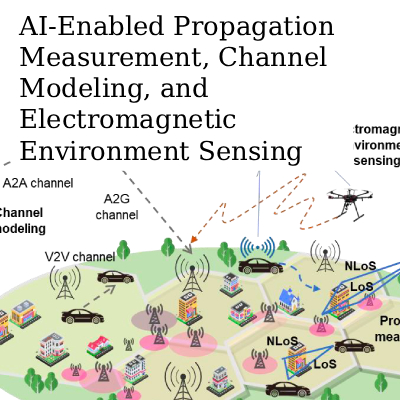Download Call for Papers (PDF)
Submission Deadline: 31 December 2020
 Aims & Scope: In modern wireless communication and radar applications, large-scale sensor arrays have increasingly been used to improve the performance of a system, enlarge effective aperture and increase the degrees of freedom (DOF) compared to a single antenna, resulting in many benefits, such as spatial resolution enhancement, improved capability of interference rejection and excellent parameter identifiability. In the past decades, numerous studies have been performed for array design and array signal processing, with a multitude of applications in radar, sonar, wireless communications, acoustics, seismology, medical imaging, and radio astronomy, etc.
Aims & Scope: In modern wireless communication and radar applications, large-scale sensor arrays have increasingly been used to improve the performance of a system, enlarge effective aperture and increase the degrees of freedom (DOF) compared to a single antenna, resulting in many benefits, such as spatial resolution enhancement, improved capability of interference rejection and excellent parameter identifiability. In the past decades, numerous studies have been performed for array design and array signal processing, with a multitude of applications in radar, sonar, wireless communications, acoustics, seismology, medical imaging, and radio astronomy, etc.
Most of the array processing approaches have been developed under the assumption of ideal conditions as follows:
Identical channel gain (amplitude and phase) of antenna array. Perturbation effects or mutual coupling of sensor array are common in real engineering applications, and so robust array calibration for parameter estimation or beamforming is required in array signal processing.
Additive white Gaussian noise (WGN) environments. In real scenarios, many observed processes have been found to be non-Gaussian or colored, such as the lightning in the atmosphere, the influence of mountains and sea waves, the switching transients in power lines and the underwater acoustic signals. These non-Gaussian signals and colored noises would cause significant degradation in system performance if optimized under the assumption that they are white Gaussian distributed.
On the other hand, due to application requirements related to antenna array systems, such as MIMO radar, massive MIMO and millimeter-wave communication for the 5th generation wireless systems, the special array design or configuration for various sensor arrays has drawn more attention in the past decade. Sparse array, nested array and co-prime array provide a systematic framework for sparse sampling and array configuration with increased degrees-of-freedom. In addition, asymmetrically shaped beam patterns could be synthesized to estimate Direction-of-Arrival (DOA) or track spatially mobile sources.
This special section aims to advance knowledge by antenna array designers and signal processing practitioners. It will include recent research advancements in and applications of array design and robust array signal processing under non-ideal conditions. For real applications, new array design approaches are needed, and robust statistical methods are investigated in order to account for the fact that the postulated models for the data are fulfilled only approximately and not exactly. Novel research results will be presented, offering innovative contributions either from a methodological or an application point of view. Review articles on this topic are also welcome.
Potential topics include but are not limited to the following:
- Sparse, nested array and coprime array design
- Array beam pattern synthesis for particular application
- Antenna array calibration
- Sparse signal reconstruction in array signal processing
- Parameter estimation in non-ideal conditions (i.e. colored noise, non-stationary)
- Robust beamforming with erroneous sensors
- Co-prime/random array signal processing
- DOA estimation in non-line-of-sight environments in wireless sensor networks
- Advanced array processing methods for applications including MIMO radar, radio astronomy, sonar, speaker localization, and wireless communications
Keywords:
- Various array design
- Array calibration
- Robust array signal processing
- DOA estimation
- Adaptive beamforming
Lead Guest Editors
Yuntao Wu
Wuhan Institute of Technology, China
Hing Cheung So
City University of Hong Kong, China
Guest Editors
Yujie Gu
Aptiv, Agoura Hills, USA
Wen-Qin Wang
University of Electronic Science and Technology of China, China
Jun Li
Xidian University, China
Hui Cao
Wuhan University of Technology, China














